Kids and Sports Injuries: What are we doing wrong?
I recently had a conversation with a parent who reached out to me slightly concerned for her 12-year-old child. He’s stressed out, hurt again and she didn’t know if I could help. It made me think about kids and sports injuries… and how we could make a difference.
Real Life Story
I had seen this kid for an overuse elbow injury within the past year, a growth plate fracture of his medial epicondyle. He’s a catcher for his team, one of many teams that he plays on. He had considered converting to pitcher but I believe he was going to rethink that decision.
He also wrestles, has multiple hours of homework each night, has hitting lessons and practices with his teams…even in the dead of Winter in December. If he’s late to practice, he gets yelled at by the coaches. Not just a casual “why are you late” kinda question but a scolding that would make any 12 year old (or adult for that matter) think twice about what they’re doing. At least this is what Mom tells me.
So Mom called me recently to discuss her son’s predicament. He’s not feeling good about himself and worried about making the AAU team. He’s a decent sized kid, big for a 12-year-old, so he tends to stick out. He can throw harder than the other kids and can probably wrestle slightly better. I’m just guessing here…I’ve never seen him wrestle.
Mom is worried that he’s too stressed with all of the sports and schoolwork. I think she may be right!
I recall a 12-year-old Lenny playing my last year of Little League baseball but that didn’t start until May or June (Yup, that’s me below on the right with my brother Brian).
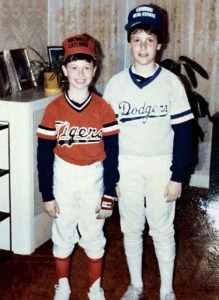
During the months of November and December, I was playing basketball, hockey and tackle football in the snow. There’s nothing like tackle football in the snow…trust me all of you warm-climate readers!
What does the research say & do kids need to specialize to play college or pro?
With that, I decided to dive into the literature and see what it says…
Most recently, a 2017 study in AJSM looked a 1st round draft picks from 2008 to 2015 in the NBA. They concluded that “those who were multisport athletes participated in more games, experienced fewer major injuries, and had longer careers than those who participated in a single sport. ”
Interestingly, of the 237 athletes included, 36 (15%) were multisport athletes and 201 (85%) were single-sport athletes in high school. Yikes!
This 2017 study from The Sports Health Journal looked at division 1 college athletes. They asked them to complete a previously utilized sports specialization questionnaire regarding sport participation patterns for each grade of high school.
Specialization increased throughout high school and ~ 41% had eventually specialized in a sport b their senior year. Conversely, only 17% of the freshman had specialized in a sport. Also, football athletes were less likely to be highly specialized than non-football athletes for each year of high school.
Do football players just need time off because of the nature of the sport? Makes you wonder…
A similar finding was seen in this study from 2017 in AJSM. They basically showed that 2011 young athletes between the ages of 12-18 that became specialized in a sport had higher injury rates by nearly 2 fold.
Nearly triple the rate of injuries
In another study out of Wisconsin looked at high school athletes between the ages of 13 and 18 years from 2 local high schools. Athletes in the high specialization group were more likely to report a history of overuse knee injuries.
Athletes who trained in one sport for more than 8 months out of the year were more likely to report a history of knee injuries (more than 2.3x more likely), overuse knee injuries ( 2.9x more likely), and hip injuries (2.7x more likely.) School size matters too. Kids that go to a smaller high school report playing in more sports than kids that go to larger schools. I see this daily in my own practice.
This descriptive level 3 epidemiology study in Sports Health Journal surveyed 235 athletes between the ages of 7-18 years. They showed that athletes started to specialize at the age of 8 years old, which is crazy!
They also showed that 60% played their primary sport for 9 or more months per year (which we know is already an increased risk of an overuse injury.) Nearly 1/3 of players ‘reported being told by a coach not to participate in other sports, with specialized athletes reporting this significantly more often.’ This kind of fits my kid above…an over-bearing coach that is pressuring the kids to practice all year round.
My Solution for him
So, my conversation with Mom ended by me telling her that I completely understood. I felt as if he needed more positivity in his life. That he was being pulled in way too many directions and needs a more positive role model (besides his parents, of course) to help him.
I had these studies in my head but I didn’t want to bore the Mom with statistics gibberish and big terminology. I told her that I loved that he played 2 sports although I didn’t like that he was speeding from school to wrestling practice, to baseball practice then to a hitting lesson. It just seemed like a lot…nevermind that he still had to get home to do all of his homework.
By the way, homework nowadays is a lot more than anything that I ever experienced as a child. It takes hours for these kids to complete. Maybe that’s why Massachusetts ranks as #1 in education in the US. A great feat for the teachers and students of this state!
But what does it mean to the youth athlete trying to play multiple sports or on multiple teams? How do they juggle all of this and get their hours of homework done?
It’s not just an isolated story…I hear this daily from our student/athletes of all ages. Kids in middle school and high school have more work to do than our college athletes. Or maybe the college kids are better at time management. I imagine it’s a little of both.
What Should we Recommend?
It’s becoming evident that specializing too early in one’s athletic career may not benefit the child in the long run. Remember, they are children that are skeletally immature. The stresses that they can handle are not the same as what an older, more developed and a mature kid can tolerate.
I’m always telling kids to take time off from their sport. I usually recommend 3-4 months of active rest. This means they can still work out that may include some baseball activities such as tossing/hitting but it can’t be the priority during their off-season.
They really need to go play another unrelated sport, like soccer or basketball to get stronger in their lower body. We all know the importance of a strong lower half…see pitchers like Roger Clemens below.

What better way to get stronger than to run and jump for hours at a time (and not have to throw anything with maximal velocity.)
I hope my advice helps my young friend and his Mom figure out his dilemma. Unfortunately, this won’t be the last time I’ll be reciting the literature to a family looking for advice. We can do our part by keeping these findings in our treatment educational components as we help get our athletes back on the field.
Last Call- Kids & Sports Injuries
Because we’re beginning to see some interesting (crazy) injuries in our youth, it seems as if the literature is beginning to paint the picture for us. Intuitively, one would think that playing multiple sports, getting enough rest and doing a little homework each night would be sufficient to allow a kid to get through high school or college (the few that do that.) Maybe this would allow the athlete to not sustain a significant injury. When I say significant, I mean an injury that requires months of rest, multiple doctor visits and rethinking if the kid should still be playing that sport.
Note: The Mom gave me permission to talk about our conversation and was excited to know that I was writing this post. In case anyone was worried…

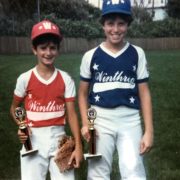

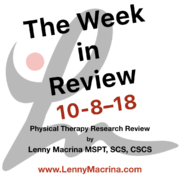
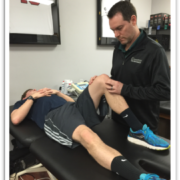
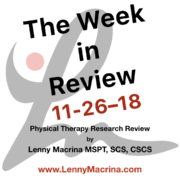
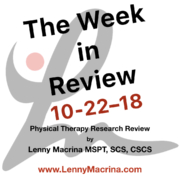
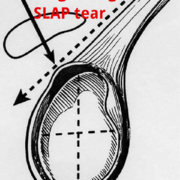

 https://pixabay.com/illustrations/new-year-s-day-beginning-start-2566661/
https://pixabay.com/illustrations/new-year-s-day-beginning-start-2566661/
Leave a Reply
Want to join the discussion?Feel free to contribute!